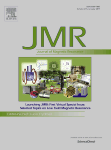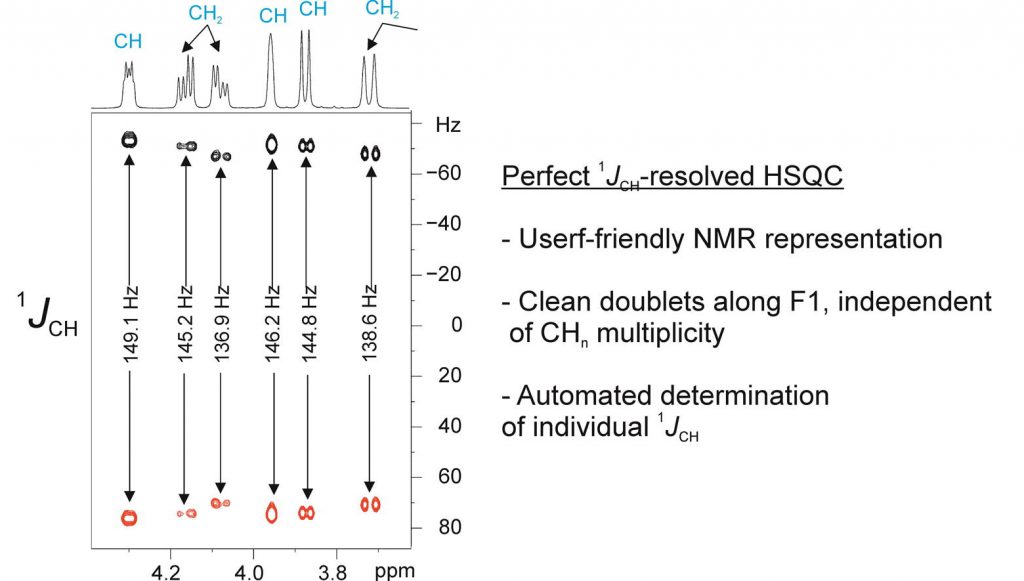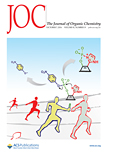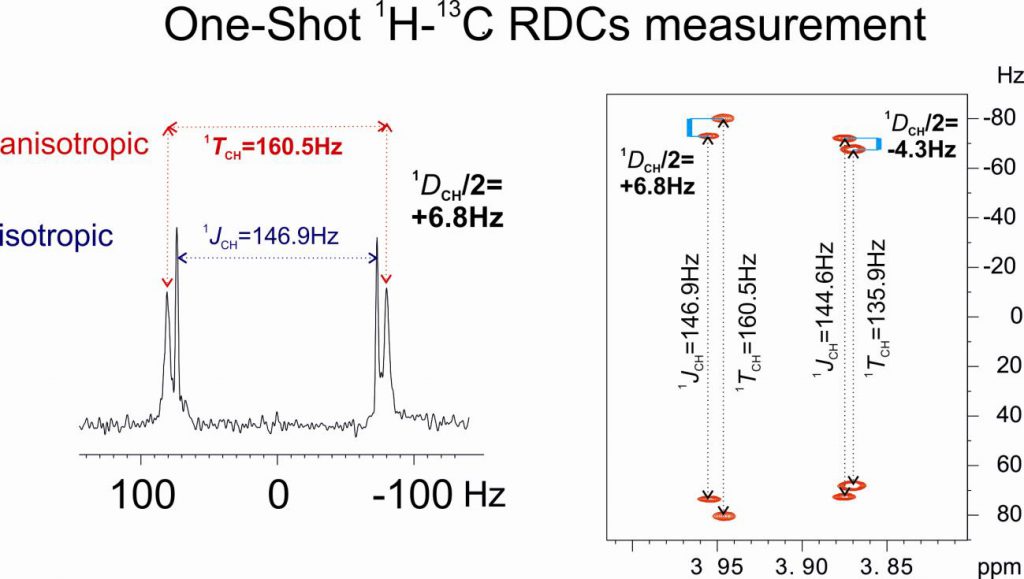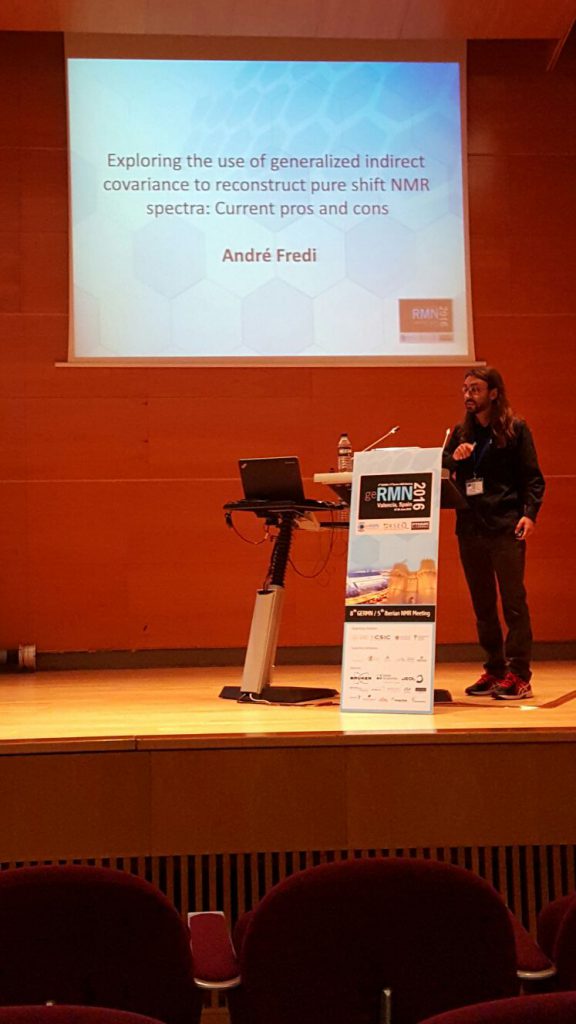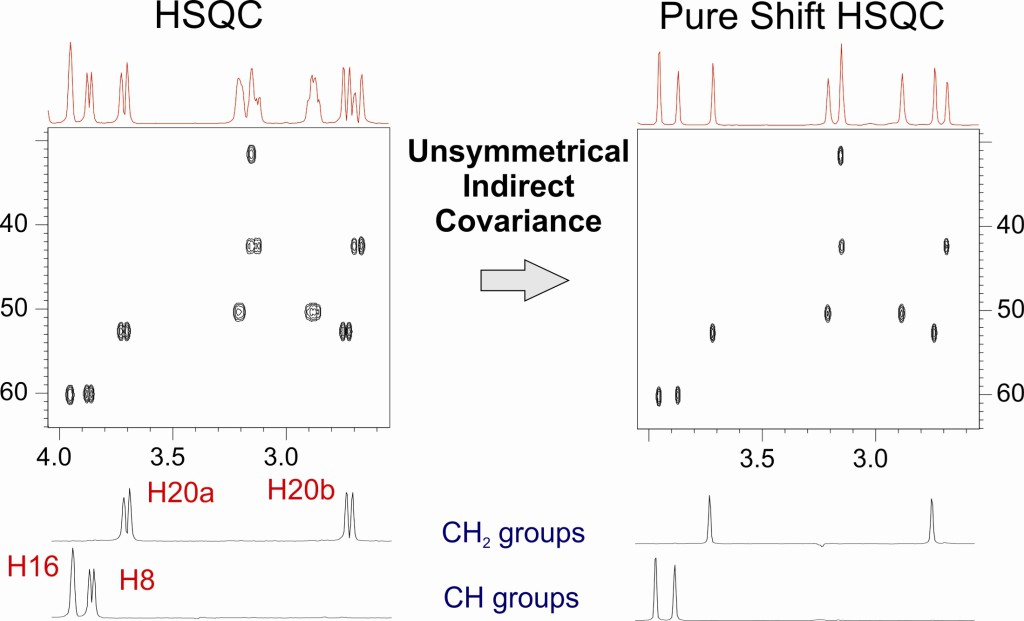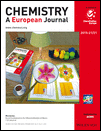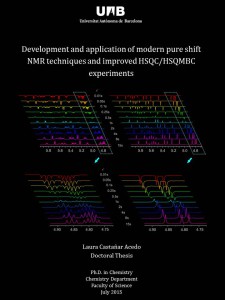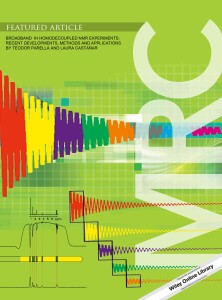“Perfect 1JCH-resolved HSQC: Efficient measurement of one-bond proton-carbon coupling constants along the indirect dimension” by Núria Marcó, A.A. Souza, Pau Nolis, R. R. Gil and Teodor Parella. Journal of Magnetic resonance 2017, 276, 37-42. DOI: 10.1016/j.jmr.2017.01.002
A versatile 1JCH-resolved HSQC pulse scheme for the speedy, accurate and automated determination of one-bond proton-carbon coupling constants is reported. The implementation of a perfectBIRD element allows a straightforward measurement from the clean doublets obtained along the highly resolved F1 dimension, even for each individual 1JCHa and 1JCHb in diastereotopic HaCHb methylene groups. Real-time homodecoupling during acquisition and other alternatives to minimize accidental signal overlapping in overcrowded spectra are also discussed.
Pulse Programs Code for Bruker:
Data set Example:
